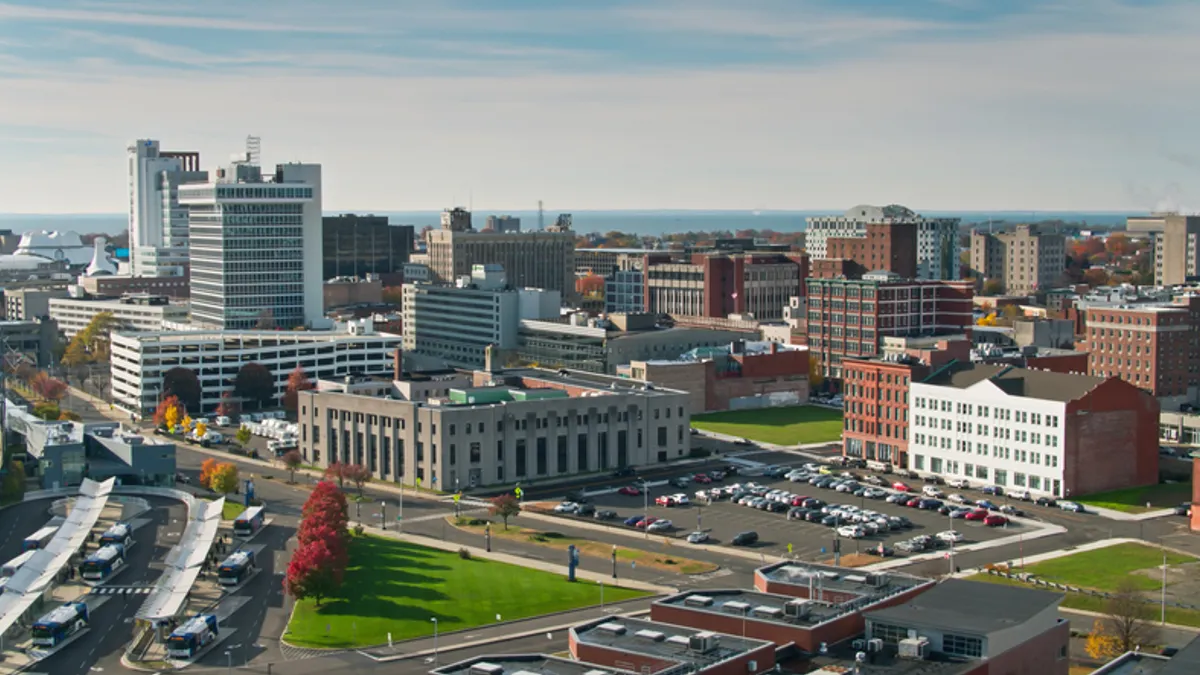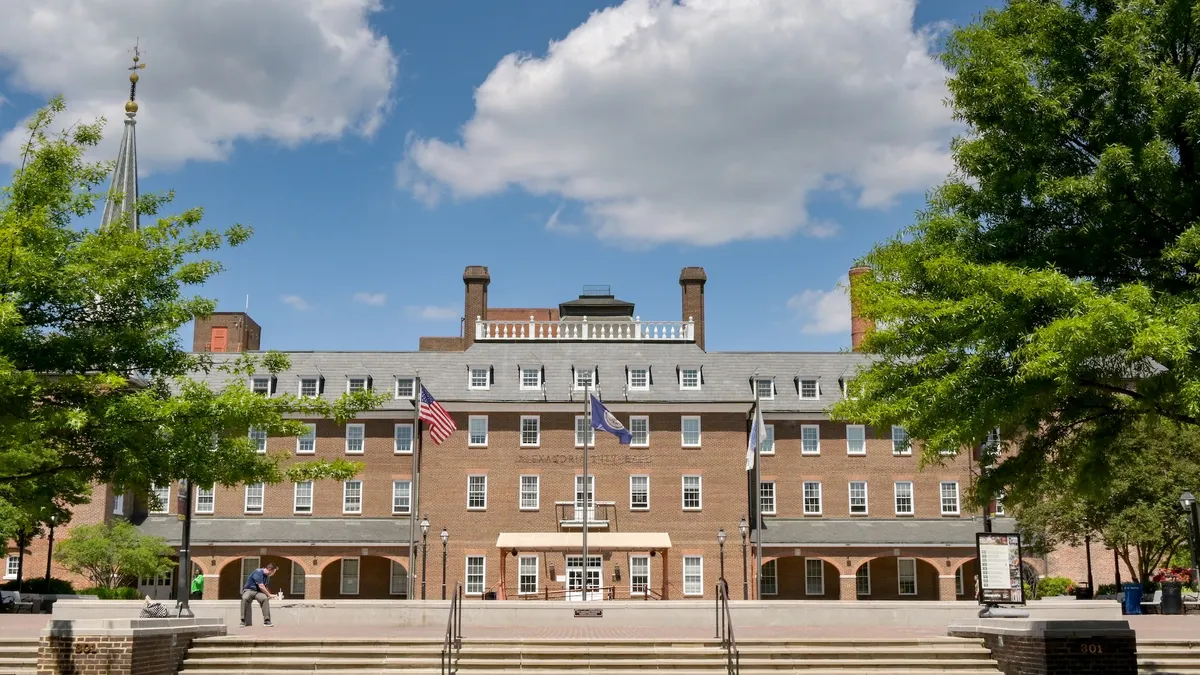Editor's note: This article was originally published in American City & County, which has merged with Smart Cities Dive to bring you expanded coverage of city innovation and local government. For the latest in smart city news, explore Smart Cities Dive or sign up for our newsletter.
The past five years have ushered in major changes for many U.S. cities, as economic shifts, technological advancements and the global pandemic transformed American life.
For other metro areas in the nation, however, the changes have been minimal.
A recent study conducted by Good Migrations explores which U.S. cities have undergone the biggest transformations from 2019 to 2024, and which cities have remained more static. The study examined metros with populations exceeding 250,000, factoring in population changes, median household income changes, employment, home value and job creation by new businesses to determine which areas have had the most dramatic shifts.
Some of the biggest changes took place in the South — with eight of the top 10 most-transformed cities located in southern states. At the same time, a majority of the 10 least-changed cities were also in the South.
“This seeming contradiction suggests that growth and prosperity in the South are not equally distributed,” the study states, “with some metros reaping the lion’s share of jobs, newcomers, and overall prosperity, leaving other cities in the region to stagnate at disproportionately high rates.”
The U.S. Census Bureau reported last year that while Sun Belt states contained some of the country’s fastest-growing cities, many large cities with populations of 50,000 or more recorded population declines during the pandemic. “Although their losses have slowed to pre-pandemic levels, their populations continued to decrease in 2023,” according to the Census Bureau. Localities with populations below 50,000, however, saw more growth in 2023 compared with pre-pandemic 2019.
The most changed cities in the U.S. over the past five years, according to Good Migrations, include:
1) Boise, Idaho
Population change (2018–2023): 13%
Median household income change (2018–2023): 34%
Employment change (2019–2024): 22%
Home value change: (2019–2024): 61%
Job creation by new businesses change (2017–2022): 51%
Good Migrations average score: 10.00
2) Provo, Utah
Population change (2018–2023): 14%
Median household income change (2018–2023): 34%
Employment change (2019–2024): 17%
Home value change: (2019–2024): 50%
Job creation by new businesses change (2017–2022): 72%
Good Migrations average score: 9.22
3) Lakeland, Fla.
Population change (2018–2023): 18%
Median household income change (2018–2023): 29%
Employment change (2019–2024): 14%
Home value change: (2019–2024): 64%
Job creation by new businesses change (2017–2022): 44%
Good Migrations average score: 9.05
4) Austin, Texas
Population change (2018–2023): 14%
Median household income change (2018–2023): 28%
Employment change (2019–2024): 25%
Home value change: (2019–2024): 46%
Job creation by new businesses change (2017–2022): 33%
Good Migrations average score: 9.02
5) Huntsville, Ala.
Population change (2018–2023): 11%
Median household income change (2018–2023): 33%
Employment change (2019–2024): 19%
Home value change: (2019–2024): 58%
Job creation by new businesses change (2017–2022): 27%
Good Migrations average score: 8.50
6) Myrtle Beach, S.C.
Population change (2018–2023): 20%
Median household income change (2018–2023): 34%
Employment change (2019–2024): 12%
Home value change: (2019–2024): 60%
Job creation by new businesses change (2017–2022): 14%
Good Migrations average score: 8.47
7) Fayetteville, Ark.
Population change (2018–2023): 12%
Median household income change (2018–2023): 34%
Employment change (2019–2024): 18%
Home value change: (2019–2024): 68%
Job creation by new businesses change (2017–2022): -3%
Good Migrations average score: 8.44
8) Knoxville, Tenn.
Population change (2018–2023): 7%
Median household income change (2018–2023): 31%
Employment change (2019–2024): 7%
Home value change: (2019–2024): 82%
Job creation by new businesses change (2017–2022): 76%
Good Migrations average score: 8.20
9) Raleigh, N.C.
Population change (2018–2023): 11%
Median household income change (2018–2023): 28%
Employment change (2019–2024): 13%
Home value change: (2019–2024): 56%
Job creation by new businesses change (2017–2022): 72%
Good Migrations average score: 8.10
10) Wilmington, N.C.
Population change (2018–2023): 9%
Median household income change (2018–2023): 46%
Employment change (2019–2024): 11%
Home value change: (2019–2024): 65%
Job creation by new businesses change (2017–2022): 21%
Good Migrations average score: 8.08
Good Migrations also looked at metros that underwent the least changes over the span of five years. Those 10 cities included:
1) Lafayette, La.
Population change (2018–2023): 0%
Median household income change (2018–2023): 13%
Employment change (2019–2024): 1%
Home value change: (2019–2024): 7%
Job creation by new businesses change (2017–2022): -1%
Good Migrations average score: 0.00
2) Jackson, Miss.
Population change (2018–2023): -3%
Median household income change (2018–2023): 5%
Employment change (2019–2024): 0%
Home value change: (2019–2024): 33%
Job creation by new businesses change (2017–2022): 11%
Good Migrations average score: 0.42
3) New Orleans
Population change (2018–2023): -3%
Median household income change (2018–2023): 21%
Employment change (2019–2024): -2%
Home value change: (2019–2024): 8%
Job creation by new businesses change (2017–2022): 5%
Good Migrations average score: 0.69
4) Anchorage, Alaska
Population change (2018–2023): 1%
Median household income change (2018–2023): 16%
Employment change (2019–2024): 2%
Home value change: (2019–2024): 20%
Job creation by new businesses change (2017–2022): 1%
Good Migrations average score: 1.04
5) Beaumont, Texas
Population change (2018–2023): -1%
Median household income change (2018–2023): 25%
Employment change (2019–2024): -1%
Home value change: (2019–2024): 12%
Job creation by new businesses change (2017–2022): 1%
Good Migrations average score: 1.05
6) Baton Rouge, La.
Population change (2018–2023): 1%
Median household income change (2018–2023): 12%
Employment change (2019–2024): 3%
Home value change: (2019–2024): 23%
Job creation by new businesses change (2017–2022): 12%
Good Migrations average score: 1.28
7) Corpus Christi, Texas
Population change (2018–2023): 0%
Median household income change (2018–2023): 15%
Employment change (2019–2024): 2%
Home value change: (2019–2024): 27%
Job creation by new businesses change (2017–2022): -7%
Good Migrations average score: 1.39
8) New York
Population change (2018–2023): -3%
Median household income change (2018–2023): 21%
Employment change (2019–2024): 0%
Home value change: (2019–2024): 34%
Job creation by new businesses change (2017–2022): 5%
Good Migrations average score: 1.51
9) Shreveport, La.
Population change (2018–2023): -4%
Median household income change (2018–2023): 31%
Employment change (2019–2024): -2%
Home value change: (2019–2024): 11%
Job creation by new businesses change (2017–2022): -15%
Good Migrations average score: 1.59
10) Huntington, W.Va.
Population change (2018–2023): -3%
Median household income change (2018–2023): 27%
Employment change (2019–2024): 0%
Home value change: (2019–2024): 29%
Job creation by new businesses change (2017–2022): -2%
Good Migrations average score: 1.62



















